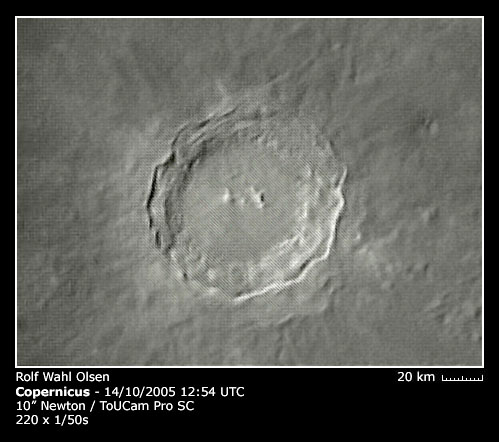Copernicus Crater

| |||||||||||||||
|
The crater Copernicus is about 800 million years old and by being 'relatively' young it is well preserved and remains sharp and well-defined.
The circular rim features terraced inner walls and a 30-km wide, sloping rampart descending nearly a kilometer to the surrounding plains. There are three distinct terraces visible, and arc-shaped landslides due to slumping of the inner wall as the crater debris subsided. The central peaks consist of three isolated mountains rising 1200 m above the crater floor. These peaks are separated from each other by valleys, and they form a rough line along an east-west axis. Infrared observations of these peaks during the 1980s determined that they were primarily composed of the mineral Olivine. The crater ejecta is spreading up to 800 kilometers across the surrounding plains, overlaying rays from other prominent craters. The rays are less distinct than the long, linear rays around the Tycho crater. | |||||||||||||||
|
Back to Moon images | Back to previous page